George Conrad Flavel House
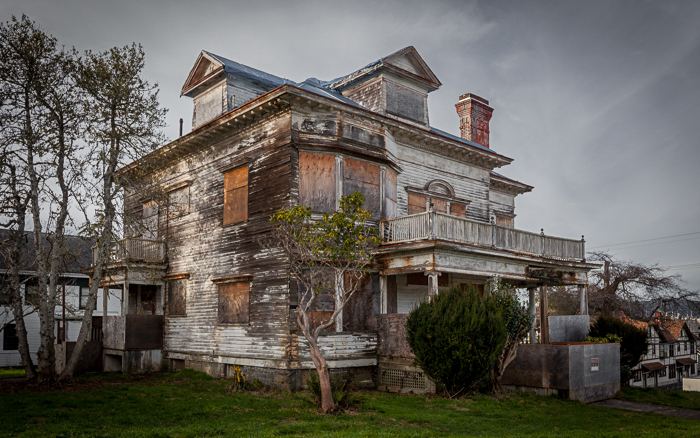
The Captain George Conrad Flavel Home
It was from the plot of a horror movie: the haunted house sitting abandoned on the hill, the strange labyrinthine history of the family who owned it and the influence, even in their absence, that they still cast upon the town, the outlandish rumors circulating around them that were repeated by more than a few of the town’s long-term residents, and to a lesser and more personal extent, my desire, ever since having moved to the town, to somehow make my way inside of the house.
Astoria, Oregon. This was the oldest town west of the Rockies, at least in terms of having the first post office. The rainiest urban locale in North America, with Washington’s secluded Hoh Rainforest being the only place on the continent that receives more annual precipitation. Though over the six years I lived in Astoria, having moved there on a whim after a bicycle trip down the Pacific Coast, the city struck me as a place that was prone to tragedy. Surrounded by water on three sides, it lies next to the the point where the Columbia River meets the Pacific Ocean – the river’s mouth known as the Graveyard of the Pacific due to the area containing more shipwrecks than any other place in the Pacific Ocean. A portion of the town itself sits below sea level, relying on the force of the Columbia to hold back the ocean. Still, the tides rise and fall daily, exposing mud flats and the occasional whale carcass at the ebb tide. The town’s steep hillsides are prone to shifts both abrupt and gradual, sometimes taking entire sections of road out with them, but more often just causing the foundations of homes built atop them to shift. Originally built as multiple villages upon multiple grids, it is possible to see where the mismatched grids align today in the wavy confluences of streets that are anything but seamless. And fill was laid down combining downtown with Uppertown, later to have a toxic logging mill constructed, eventually followed by boutique-looking “pond-front” homes on top of this polluted land. Astoria – built from the wood and logging-riches that made it a destination – burnt down multiple times, until architects realized the wooden-pier construction that expanded downtown also acted as an oxygen bellows if a wayward spark or off duty worker’s cigarette ignited the logging mills’ dust, and now a series of concrete walled underground tunnels lie where those wooden pier pilings once stood.
The area markets itself as a tourist destination, being the point where the Lewis and Clark Expedition reached its westernmost point. Though no one has been able to pinpoint where the explorers built their Winter camp, a re-creation of the camp and forts were constructed in the area where it was thought to be. Several years ago, that fort caught fire and burnt down too.
And whereas Portland, lying 100 river miles inland, was once known for shanghaiing drunks, its crimps waiting until bartenders had fed these men enough liquor for them to tease out an inebriated signature on a contract before loading the unassuming lush onto a ship bound for a foreign port, Astoria was known for not even bothering with such trivialities, and instead just loading anyone unfortunate enough to visit with a bartender or working girl in on the hustle onto a ship bound for a foreign continent. At least one building in Astoria’s Uppertown neighborhood still has the trap door in its floor that once led to the catwalks to the docked ships.
Before having moved to town, while living in Portland, it was its own destination amongst my friends to hitch hike out to Astoria, and at night, to slide open a window to the basement of the house used in the filming of The Goonies and sleep in the basement, as the house was vacant at the time. It was later bought, and in its a driveway was a sign welcoming visitors to park on the street below and walk up to the cinematic landmark. Eventually, after tiring of the foot traffic in front of the iconic home that they bought, the owners replaced that sign with one that now says no visitors or admirers of any type are allowed. I often wonder if the Goonies graffiti left on those concrete basement walls is still there…
***
Astoria also has a few other qualities that play into this story:
1). From 1991 until 2014, a man named Willis Van Dusen, who some think of as a local good ‘ol boy, held the office of mayor (his side business was owning a Pepsi-products soft drink distribution warehouse in town, and locals tell stories about how he would loudly storm out of a restaurant if he ordered a Pepsi and was told that they carried Coke products instead.).
2.) Due to the deadly history of the Graveyard of the Pacific, trans-oceanic ships headed for inland ports can only enter or leave the Columbia with assistance from a bar pilot, a highly-expert captain who enters the ship in either the ocean or at the river bar and guides it over the historically deadly tides and hidden meandering shoals.
3). Finally, around the late 1990’s, Astoria had a population of about 6000, though this number swelled a bit during the Summers. But spread out and separated by geographical barriers like rivers and hills, the population of the core area of town was less than those numbers. The city was served by a lone high school, a single post office and the few traffic lights in the downtown strip about four blocks long would switch to blinking red or yellow after night fell. Basically, it’s a town where everyone knows, or knows of, everyone, and word of mouth is still the primary viaduct for the spread of events, news and local issues.
***
Upon moving to Astoria, I would occasionally hear stories behind the Boo Radley-esque abandoned home on the corner of 15th Street and Franklin Avenue. This home was large, imposing, and beautiful in its decay – one that would only increase over the ensuing years. I would sometimes walk carefully through the overgrown blackberry bramble that had taken over the yard of the lot that it sat on, leaving only a narrow path up its old concrete walkway and around the perimeter of the home.
The home, I learned, belonged to Harry and Mary Louise Flavel, brother and sister, both of whom had fled the city in the aftermath of Harry being put on trial for stabbing a man in town one night. The Flavels occupied a prominent place in Astoria’s history, a historic family in a historic town and maybe the most visible example of the city’s Old Money. I asked friends about the house, and frequently enough, stories of the home and the Flavel family would arise without needing to be incited, such is the flow of conversation in the smallish town.
What was often amusing, and perplexing, was attempting to figure out the validity of these stories. Many seemed so outlandish that they had to be rumors, or at the very least, significantly embellished over time.
I also talked to others about the possibility of getting inside the house. Not so much how to take a tour, the boarded up windows and stories of the family’s prolonged absence, often following periods where no one knew of their whereabouts at all, or at least no one who was talking about it, meant that waiting for a way to get inside legally was probably not going to be an option. I was interested in finding out if anyone had actually gone inside, permission not necessarily withstanding…
Over my years in Astoria, I would spend afternoons in the files of the historical society looking through old news articles. I would often check out historical newsletters and publications from the library. I would try to remember every rumor and story about the family told over the bars and at dinner parties in the quiet town.
It’s interesting trying to piece together fact from fiction in a small town timeline before the internet came to ubiquity. The town’s single newspaper is the primary record, though the paper’s editor, like so many other individuals in town, reflect a strong sense of bias when speaking of the family and past events. Especially so in a historical town whose economy is based in large part on tourism, and the oversized myths might just be encouraged to some subconscious degree.
As may be imagined in a small community, it’s hard to find people with first-hand knowledge who will speak openly. There seems to be a large degree of suspicion, even fear of talking about the Flavel family, or many of the branches leading to others in the community. This shrouds much of the actual events in mystery, and leaves the rumors to fill in the blank spaces. These rumors were more than fed by the eccentricity of the family at the heart of the story as well.
Over time, I thought the rumors created a pretty entertaining story in themselves. And if it may be impossible to know the truth, for the time being, then the story and sequence of events as they are popularly stitched together in town still makes for a stranger-than-fiction, and uniquely Astoria, narrative.
I can’t attest to the accuracy or truth of all, or even much for that matter, of the information that follows. Again, the scene, the environment, the cast of characters could all easily be straight out of a movie script. But they’re real. I no longer live in Astoria, but this entire story – the oddity, the small town politics, the constant wrinkles and seemingly inability for the sequence to maintain any type of linear path – is amongst the things that drew me to the town.
These are a few of the ghosts of the George Conrad Flavel House.
***
Not much is known about Captain George Flavel before he came to Astoria. While one friend of his asserted that he was born in Northern Ireland in 1823, census takers recorded his birthplace as New Jersey, while different sources also claim Oregon, and Norfolk, Virginia. Flavel is most remembered for starting the first bar pilot business on the Columbia River, charging ship traffic a fee to provide them with safe passage over the deadly and moody river bar.
Others attempted to challenge Flavel’s hold on the bar pilot business, however Flavel would anchor a ship of bar pilots in the sea allowing for immediate boarding for incoming ships, saving a day or more in time versus other pilot companies who would wait for favorable conditions to leave the Astoria ports and head to meet the ships at sea. Flavel would even send pilots to board ships in San Francisco in order to have the jump on competing companies. Eventually ship captains became loyal to Flavel.
Flavel became a millionaire, and at age 31, married the 14 year old daughter of Conrad Boelling, one of the town of Astoria’s pioneers and owner of the Astoria Hotel. George and Mary would build an elaborate home at 8th and Duane Streets, which would eventually be turned into the Flavel House Museum, that remains open for tours to this day in Astoria.
The two had three children, one of whom was a son born in 1855 named George Conrad Flavel. George Conrad Flavel and his wife, Wenona, would never come to reside in his parents’ mansion, but instead would build a house at 15th and Franklin in 1901. George Conrad Flavel would work as a bar pilot for his father, who had proceeded to purchase commercial properties in the town. George Conrad and Wenona would have one child, a son named Harry Melville Flavel.
Harry Melville Flavel is remembered as being less dynamic of a civic personality than his father and grandfather. He acted as president of the Flavel’s Bank and oversaw it being bought out and taken over by a larger bank. He had three children with his first wife – the middle child, Patricia Jean Flavel was the one who donated Captain George Flavel’s mansion to the Clatsop County Historical Society. Harry Melville Flavel then married his second wife, Florence Sherman. After the death of his father in 1923, Harry Melville Flavel inherited the home on 15th and Franklin, and moved with Florence back into the house to live with his mother, who remained there until her death in 1944. A year after returning to the house, Harry Melville and Florence Flavel had their first child together, a daughter named Mary Lousie (born 1925). Two years later, they would have a son named Harry Sherman Flavel (born 1927).
Following the older Harry’s death, Florence lived with the children, Harry and Mary Louise, in the home at 15th and Franklin. Such was the situation up until 1990.
***
Rumors persist of the youngest Flavels, Harry and Mary Louise, and their contempt for the city of Astoria. One reason theorized is because the Flavels felt that they should be the rightful owners of the Flavel Mansion, which the city had since operated as a museum. A story circulating in town goes further and says that following the abandonment of the 15th & Franklin home, the Flavels became aware of some of their furniture having been stolen, later to end up inside the museum. When a representative demanded to know where the museum obtained the furniture from, it was traced back to an antique shop in Portland, whose records indicated that the furniture was sold to them by the mayor of Astoria’s son. Though there doesn’t seem to be any record to back up this story.
Regardless, this contempt is described as the reason that a block of commercial buildings owned by the Flavels were abandoned and allowed to fall into disrepair, lying empty and derelict for years on both sides of Commercial Street between 9th and 10th Streets in downtown Astoria. The rumor is that a vindictive Flavel family decided they would make the primary route into Astoria from the coastal 101 highway as unattractive as possible for the city.
***
Such a prominent and impactful family within the town, it goes without saying that the Flavels were spoken about throughout the town. In 1947, after a water utility worker heard Florence’s screams for him to help her coming from inside the Flavel’s home, he rushed inside the house and broke down an upstairs bedroom door in an attempt to help her. Inside he was hit and cut by a teenage Harry wielding an axe. Later in court while being tried for assualt, Harry would claim he swung the axe in self defense, stating that he had simply locked his mother in the room so that she could search for a misplaced key. Despite her frantic screams, his mother and sister would both tell the court that she was in no danger, and the court would not convict Harry for the assault. Paired with other stories of visitors to the house who had seen indoor banisters destroyed in Harry’s fits of rage, the name murmured around town following the assault trial, ‘Hatchet Harry’, would stick…
***
Mary Louise was known as being the more social of the Flavel children. She would attend social events in Astoria, and would eventually leave for New York City where she would manage performers in the opera world. She returned, however, in the 1970’s, and the two children would continue to live in the house with their aging mother.
Another story going around concerned the moody Harry locking his mother and sister out on the upstairs balcony one night when he became upset, neighbors around the house hearing her screams until the police were forced to rescue them with a ladder. There is nothing on record confirming this either, though the visceral imagery of a woman held captive on the cold and rainy upstairs porch is an oft-repeated story to this day.
An additional rumor going around is of the notoriously cheap proclivities of the younger Flavels. It’s not known if they had the money and just refused to spend it or were genuinely tight on money, but many of their actions were characterized by this. In the 1980’s, a paint crew set to work to repaint the house. Though after two weeks of work, and having not seen a payment, they left the house with much of the paint scraped and abandoned the job. The house would remain in this unfinished state.
In 1983, a 22 year old named Alec Josephson was driving home from a bar in downtown Astoria when someone slammed a dog chain across the hood of his car. Josephson confronted the person near the Star of the Sea School, and in the ensuing argument, the man said he hit Josephson’s car because he was driving too fast. In the moments that followed, the man, Harry Flavel who would now be in his late 50’s, stabbed Josephson with a knife. Flavel was arrested and charged with first-degree assault and attempted murder.
With Florence aging and mostly confined to the home, Harry and Mary Louise became increasingly reclusive. Over the next few years, it’s noted that invitations to others to enter the home became increasingly sparse. Visitors reported piles of old papers and boxes lining the house, leaving many of the rooms with only enough space for one to very narrowly walk through, while the rest of the available space was filled with what looked like a hoarder’s collection of worthless junk.
Flavel was found guilty of assault, and in 1990, after his appeals – eight rounds in total – were eventually exhausted, facing a one-year sentence in jail, neighbors tell of seeing the family pack into a car and drive away. With the house locked behind them and Mary Louise requesting the previous restitution check to Josephson – a $800,000 fee awarded through a civil trial – cancelled, the Flavels left Astoria, their whereabouts unknown.
A year later, Harry was arrested in Pennsylvania for stealing hotel towels, however he failed to appear for his extradition hearing. He was then arrested again in Tewksbury, Massachusetts after a hotel worker reported him to local authorities. He was sent back to Clatsop County. After serving his sentence, he would return to Massachusetts, this time not being found. Florence, meanwhile, would die at the University of Massachusetts Medical Center in Worcester, her children refusing to pick up her body. Following their mother’s death, Harry and Mary Louise would return to Oregon, but would never move back into the home on 15th and Franklin again. Legal records following their return show them as having lived in the Beaverton area.
***
The home along with the family’s commercial properties on Commercial Street would continuously come up for forfeiture due to unpaid taxes, though each time would be saved from forfeiture in the 11th hour, and would continue to remain in legal possession of the Flavel family, represented by a family trust.
Sometimes, however, the circumstances of ownership were slightly more murky. In one instance, Jim Neikes, a former logging and trucking company owner, bought one of the commercial properties near 9th and Commercial streets at auction for $80,000. Though in this instance, a judge allowed the Flavel trust to pay $108,000 in back taxes with interest and Neikes’ purchase price, and the Flavels ultimately retained control of the property.
In another instance in 1996, Robert and Elizabeth Stricklin were planning to bid on the house at auction, but instead opted to pay the back taxes owed themselves, in hopes that they could then work out a deal directly with the Flavels who would legally retain the property after the taxes were paid. The Stricklins ultimately had to sue the Flavels in order to recover their payment, and the Flavels remained owners of the home.
***
The house remained boarded up, with a couple individuals in town checking on the home sporadically, and local high school kids often finding out the neighbors’ diligent attention to the property and propensity for calling the police. Though some of these high school kids could also tell you of the entryway into the basement that existed if you were willing to crawl beneath the porch. I never took up any of their invitations to explore the house. It wasn’t until later that I would finally get inside the abandoned home…
***
In December of 2007, a combination of storms – later named the Great Coastal Gale of 2007 – came off of the Pacific and hit the northern Oregon Coast, causing widespread flooding in some towns, and taking out power for several days in downtown Astoria. The power outage lasted for nearly two weeks in some of the rural areas nearby. The storm ripped roofs off of homes, knocked down many trees and power lines throughout town, and completely decimated some areas of forest up in the hills. I
In the absence of electricity, we spent the next few days collecting ice left by the fishing boats that would come into port to unload their catches to take home and store our food with, and walking between friends’ houses and apartments, depending on who had gas ovens and water heaters. A very large portion of the community opted to leave town during the storm, and remained away over the successive days of the power blackout. Cel phone towers were toppled or powerless, and there was no signal, and local police lost use of 911 dispatching services, and had to create a local phone number in the event that landline owners needed to get ahold of them. Downtown, armed guards sat in a truck outside the Bank of America branch, whose building had lost its glass and suffered significant damage, leaving its vault exposed and vulnerable.
In our walks around town, we had noticed that one of the plywood boards had blown off of a window on the back of the Flavel home, leaving the open windowpane exposed. Quite simply, we assumed that even in the unlikely event that someone was still around to see us, they would have to deem us visiting the house a big enough priority to call the police, and that’s if they even had a landline and knew the temporary phone number to make the call…
After dark one night, we parked on the street and carried an aluminum ladder quickly up the walkway and around the back of the house. We took turns climbing through the window. The rest of the plywood boards remained in place, allowing us to use our flashlights.
The interior of the house looked as if a bomb had exploded – throughout the entire house. I’m pretty certain I never made actual contact with the floor. Each room was buried beneath a solid layer of papers. Books, telephone books, furniture, boxes, old newspapers, magazines and an array of other junk covered all of the floors, often over a foot thick. It was clear that other post-abandonment visitors had made a complete mess of the inside of the house. It was also notable that there was no nice furniture in the house, looking like past visitors may have stripped the interior of anything deemed potentially valuable.
We pointed out interesting trinkets to each other. In one of the upstairs bedrooms, a set of clothes was laid neatly across an old thin-framed bed with a rabbit-eared television stood at the foot of the bed and a bottle of pills was spilled across the tray set atop the bed. Everything looked old – it had been 17 years since anyone had last resided in the house. Astoria’s wet air had not treated the exposed parts of the home kindly. I took a few pictures, but we were trying to minimize the amount of lights we were using and not spend too long inside with the ladder propped visibly against the rear outside wall. We soon climbed back out, carried the ladder quickly to our car, and drove back in the late night calm to our house…
***
Even in the absence of the Flavels, in the mid-2000’s a restaurant moved into one of the commercial properties. For years the empty storefronts had cardboard signs leaning against the interior windows of a phone number to call to inquire about renting. They said they called often, and were repeatedly told by the trust that they would check with the owner, then shortly after followed up with a ‘No.’ Until one day, the response came that it would be fine.
At least one individual in town communicates with the Flavels and their conservator. In late 2010, while trying to search for the a way to contact Mary Louise, it was discovered that a death certificate had been issued in Portland for Harry Flavel several months earlier. After asking the Flavel’s Astoria liasion if Harry had in fact died months earlier, it was confirmed. A news story goes on to say that after nine months, Mary Louise had still not claimed her brother’s body from the morgue, and it was buried in an indigent field in the Portland area.
***
In 2011, the city of Astoria initiated proceedings to create a derelict building ordinance, primarily to deal with the Flavel properties. This ordinance allowed the city to impose a fine for each day that properties were in violation. After not being able to reach Mary Louise, now the sole owner of the properties, the city of Astoria began to put the process of forfeiture to the city into motion. If the fines, totalling $5.6 million at their highest point, went unpaid, the city would be able to take control of the home and commercial buildings. Ultimately, a deal was struck that would allow Mary Louise to sell the properties herself. The house on 15th and Franklin would be listed at auction through her conservatorship in 2015.
***
We returned to the house. Posing as representatives for a potential buyer and paying a small fee created to discourage non-buyers from entering the property, we came to the house for the one-hour window of time that interested parties could tour and appraise the home. The plywood over the front and rear doors, along with the basement entrance had been removed, letting light into the house. Much of the junk on the floors, along with most everything else had been hauled out. Though dusty, moldy, and with peeling wallpaper and torn fixtures, the interior features sat mixed with the few boxes, the ripped floorboards, and much of the odds and ends that had not been thrown away for whatever reason. Aside from a few personal artifacts – some clothing still hanging from wiring strung across the basement ceiling, kitchenware sitting amongst dusty shelves, not to mention the refrigerator that city officials had found a dead dog of unknown age in when inspecting the house prior to the sale – there was not much to show that this had been the family’s world for an increasingly secluded and erratic period of their lives.
On the outside, the home still appeared an old sentry perched over the intersection, bookending a row of colorful homes and a Bed & Breakfast displaying notices of historical status. I took pictures, but in order to not give away that I was just here to see the house, I only had my 50mm lens and camera flash, and I walked the floor with a friend posing as my contractor consultant, admiring the rooms with only a few others there who had a genuine interest in possibly buying the building. Word of the figures that the conservator was expecting the auction to reach got around, but the numbers seemed like only someone accustomed to higher price tags more in line with Portland or Bay Area prices would consider paying – anyone local basing their bid on local market prices, coupled with the historical status that would require a significant amount of improvement but did not allow for much physical change would probably find the cost prohibitive.
Eventually, a local business owner with a plan for the long term restoration of the property won the auction.
As of 2017, the last of the Flavel’s derelict properties were sold, leaving the family without any stake left in Astoria.
A couple people have been able to track down Mary Louise, 92 years old in 2017, to her current residence somewhere in the Portland area, and though she is friendly, she seems to have no interest in talking about Astoria or the properties.
Astoria is changing too. The Flavels exist only in name, and as new people move to the town, it follows that the occasions when the Flavels get brought up over drinks at the town’s older bars or newer breweries – outlandish stories of questionable validity of a family that has unintentionally made outlandish their ethical and behavioral compass – will only occur less and less frequently.
The boards have been removed from the windows, and some of those long term improvements have started, though the new owner admits that work on the house will probably take him the rest of his life. And the Boo Radley house on the corner of 15th and Franklin slowly fades into the light of the surrounding charm and neighboring historical buildings. The George Conrad Flavel home, a piece of Astoria’s past, shifts like the subtle land movement and ebb tides, leaving it another of the ghost hulls buried beneath the meandering shoals and historical society newsletters…
(prints, digital images and licensing are available. more info is on our store page.)
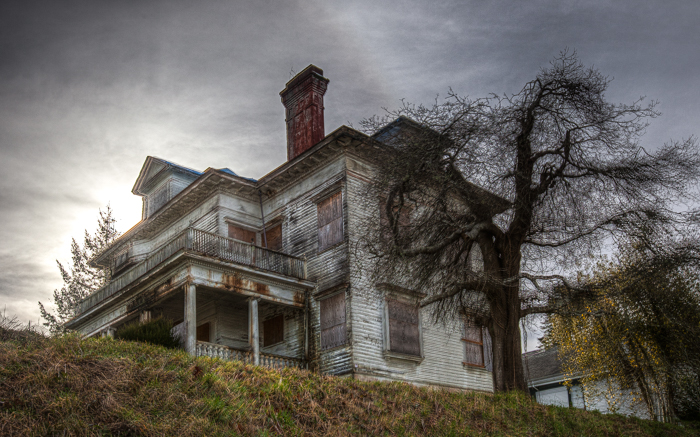
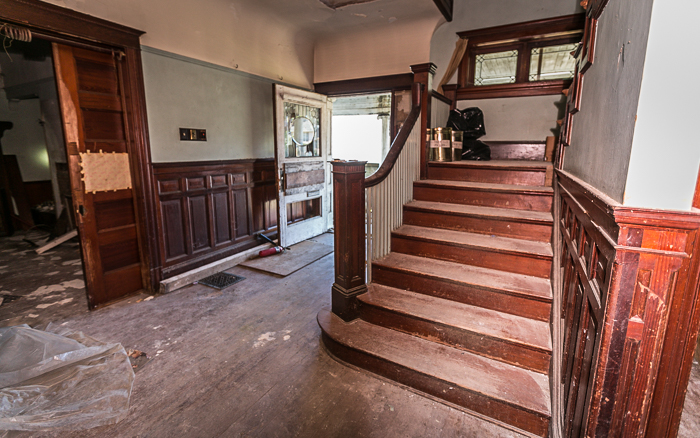
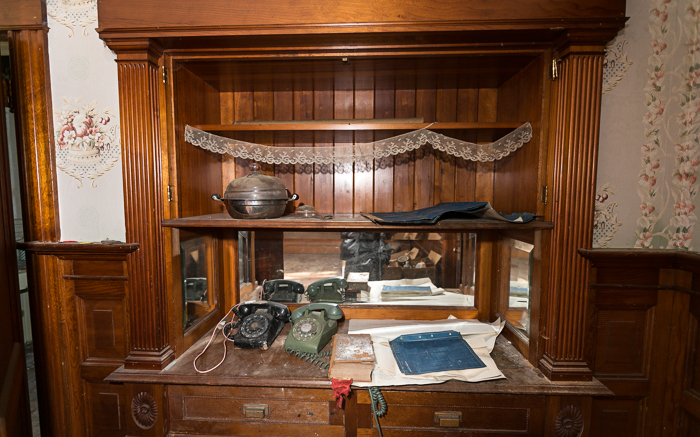
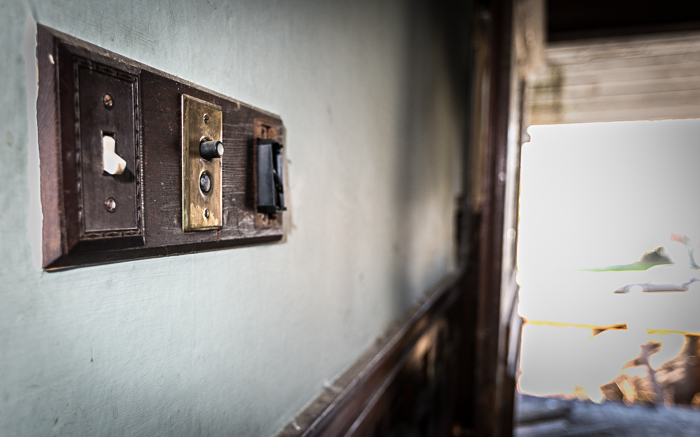
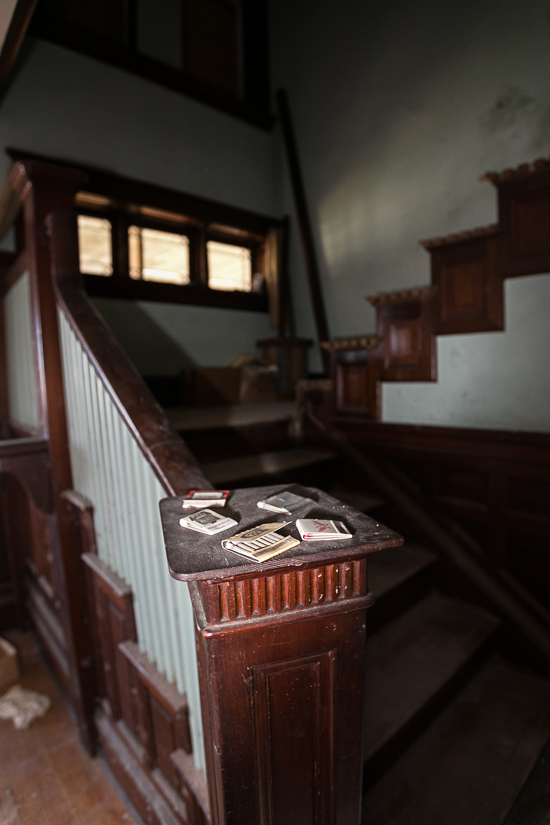
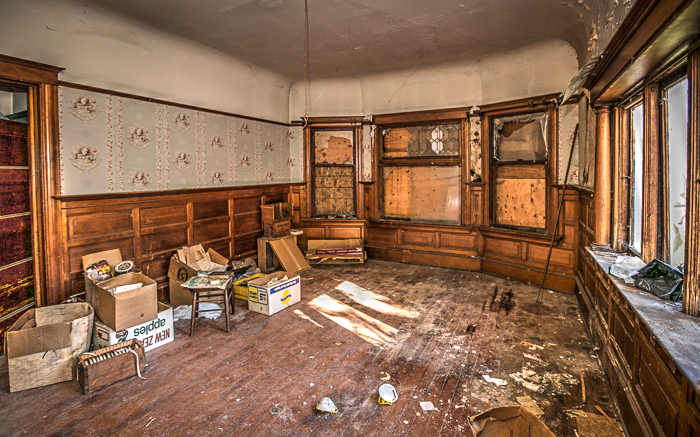
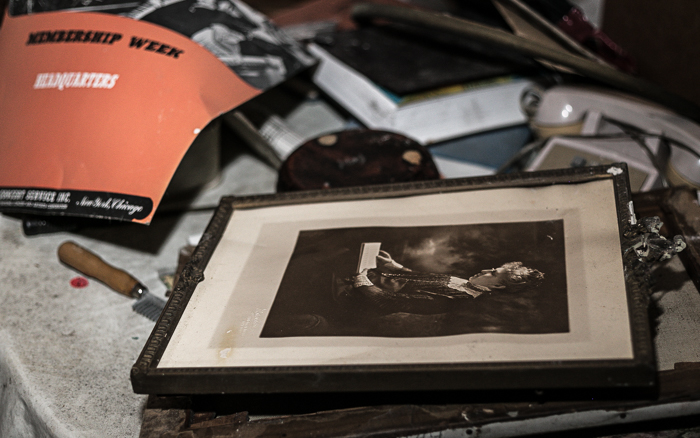
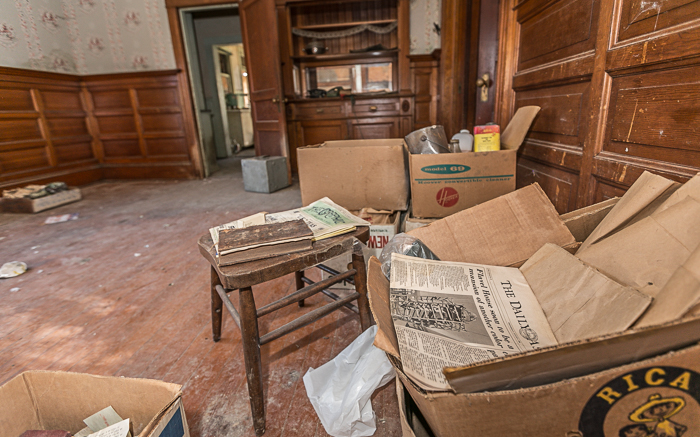
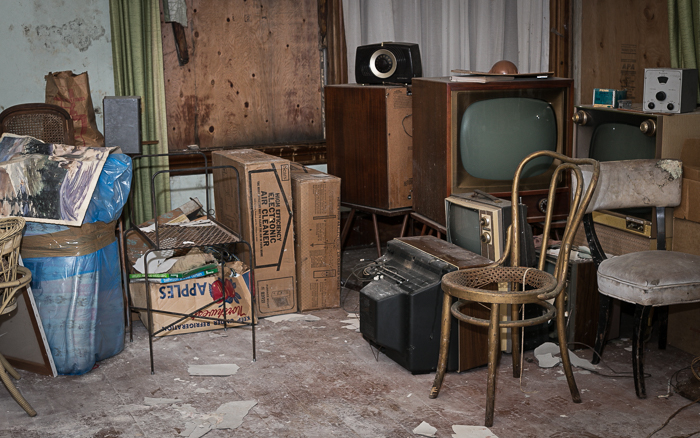
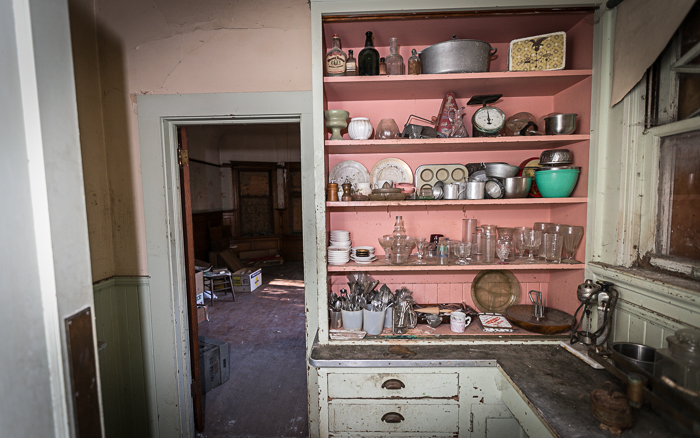
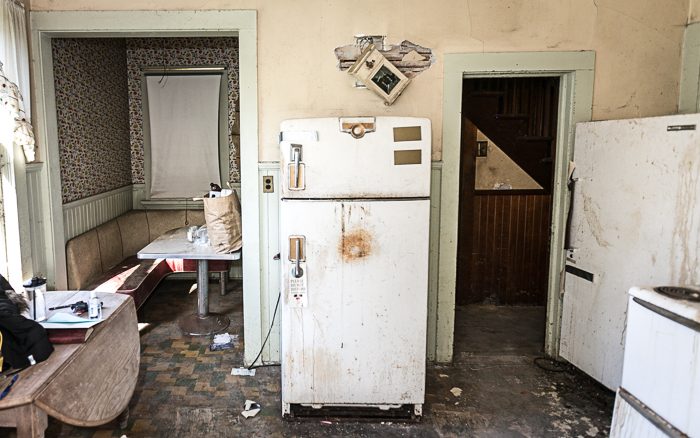
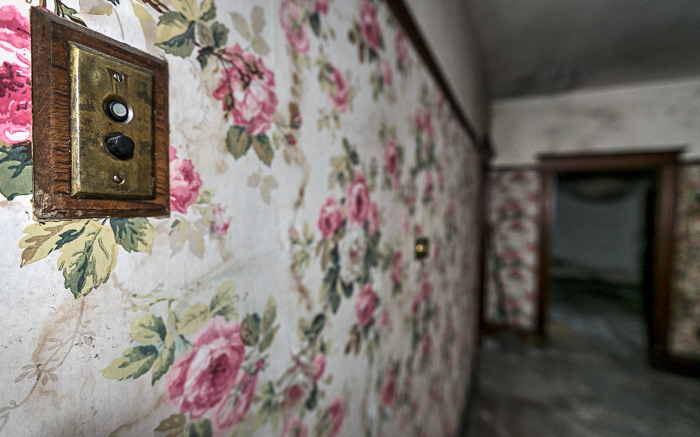
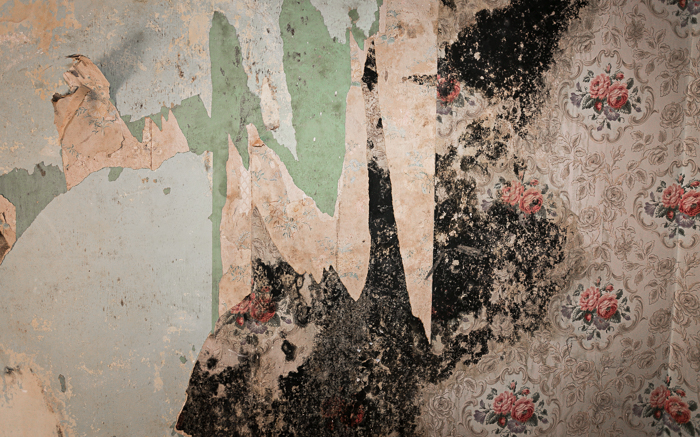
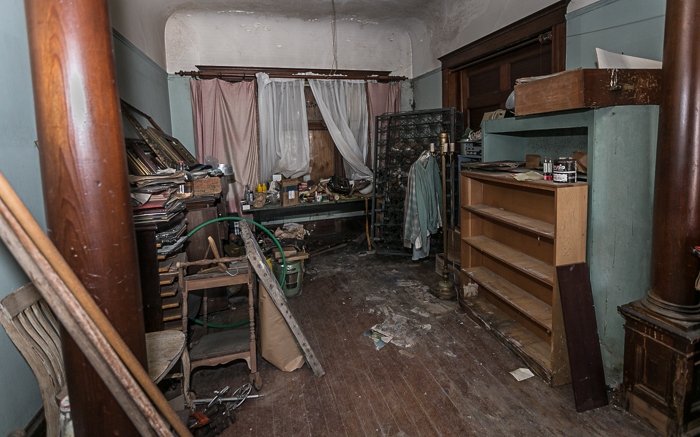
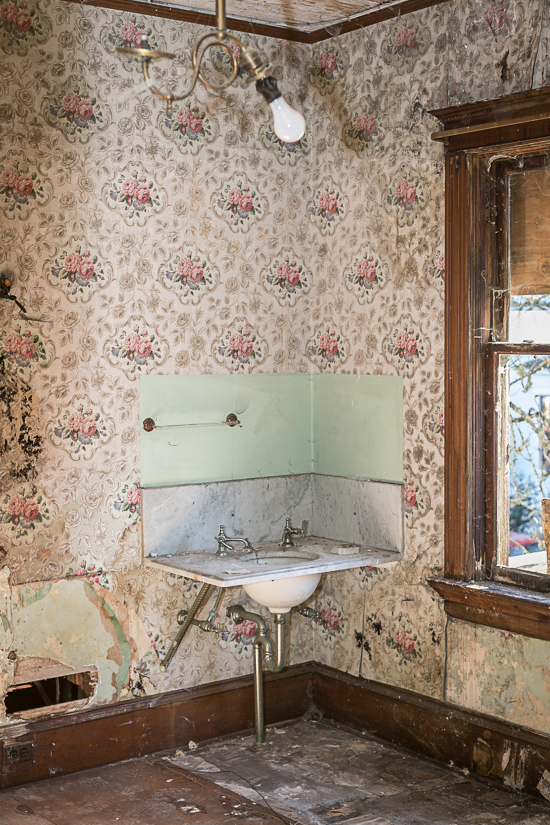
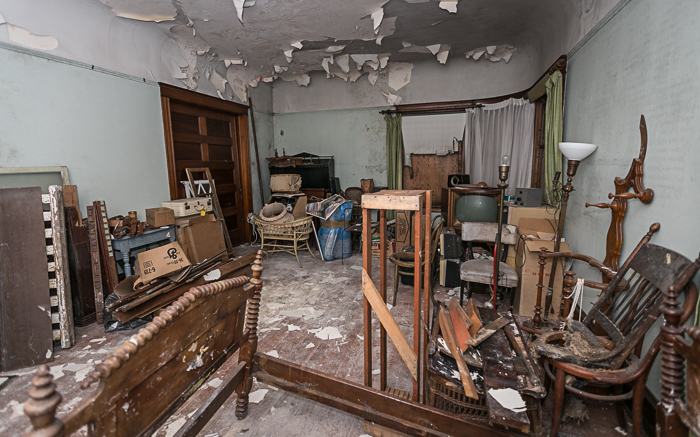
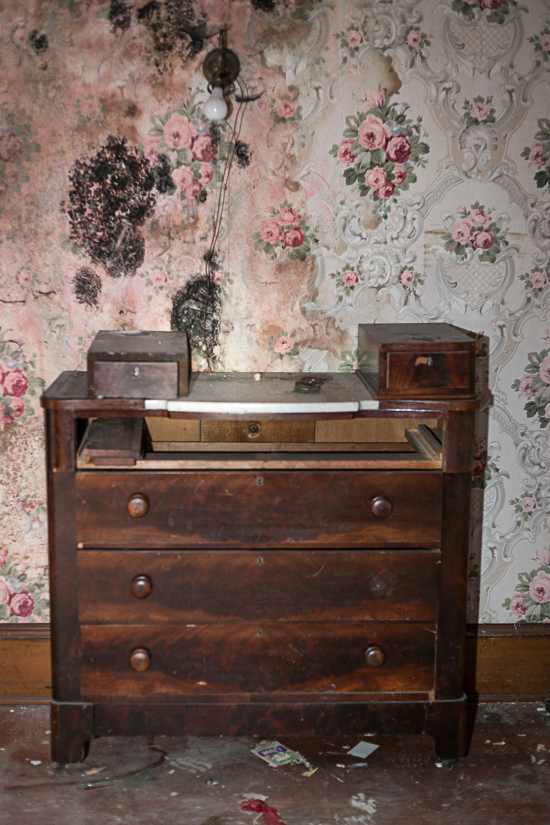
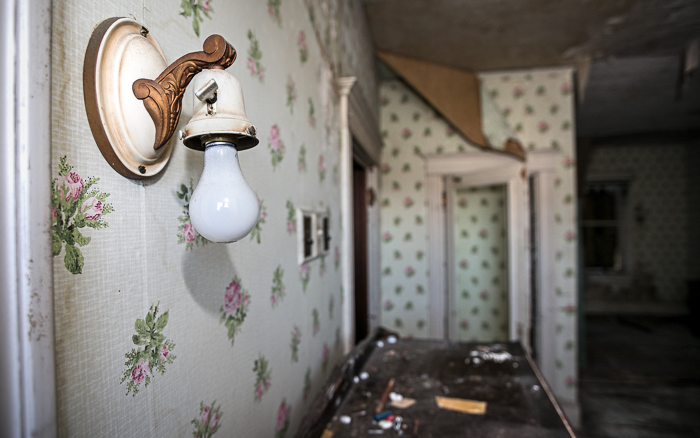
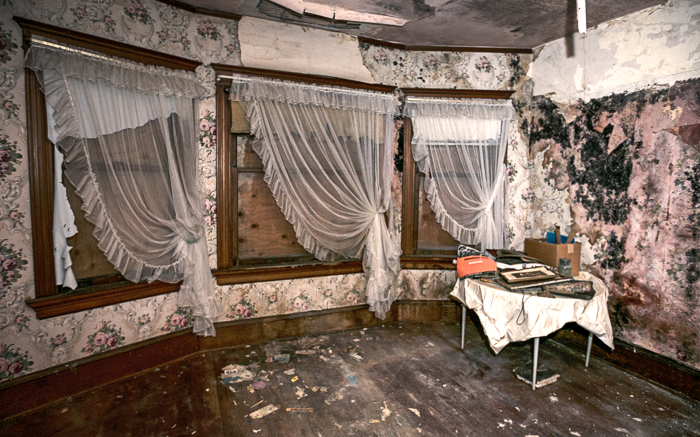
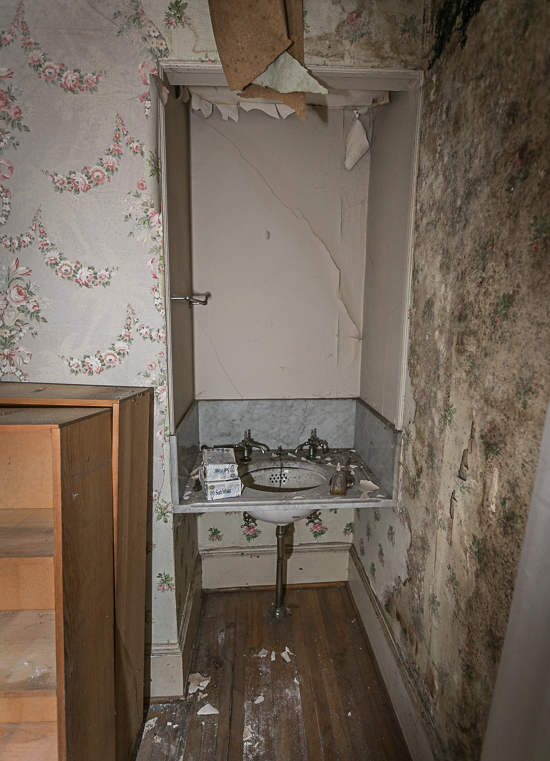
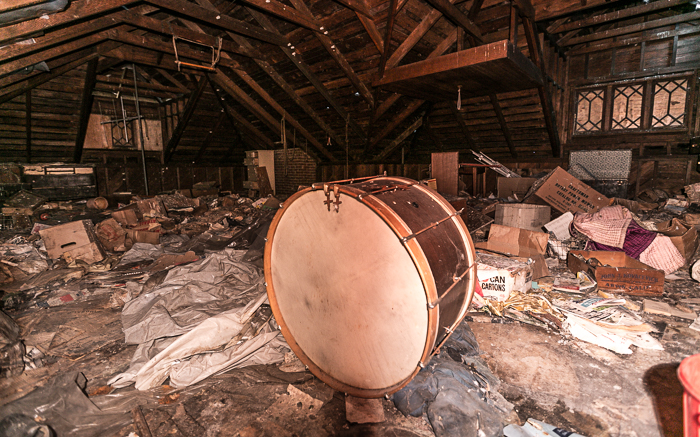
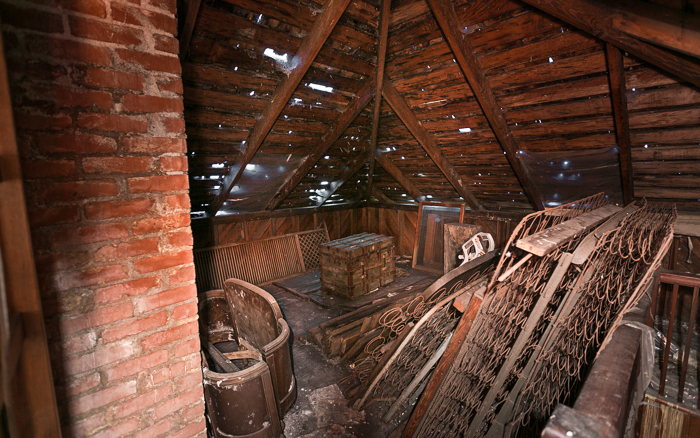
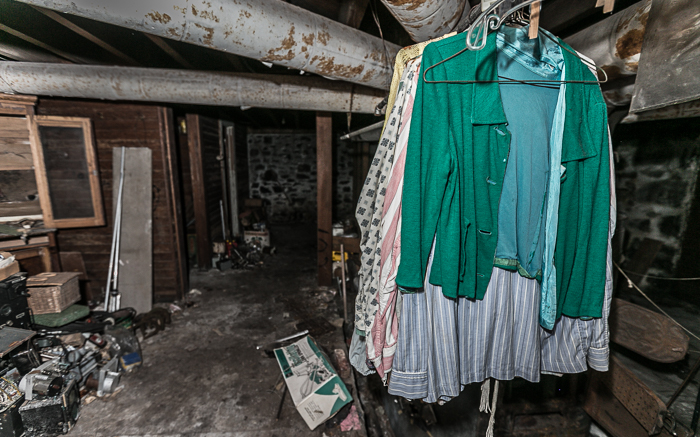
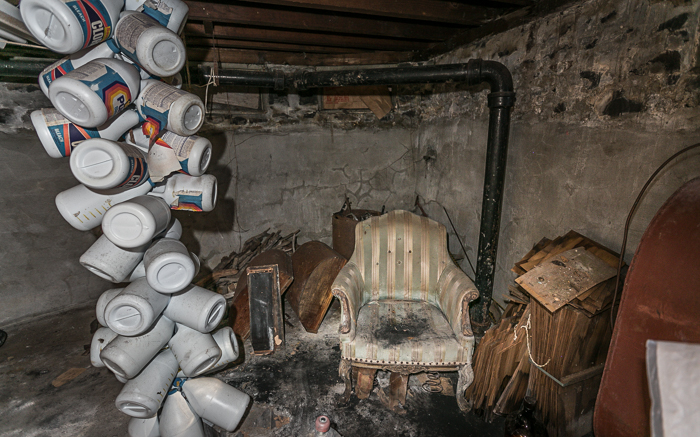
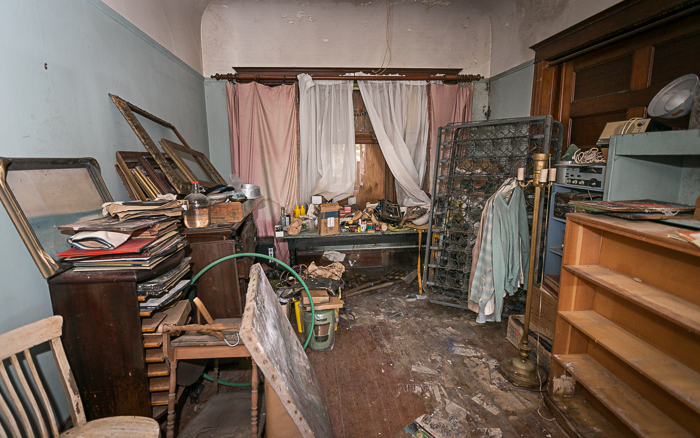
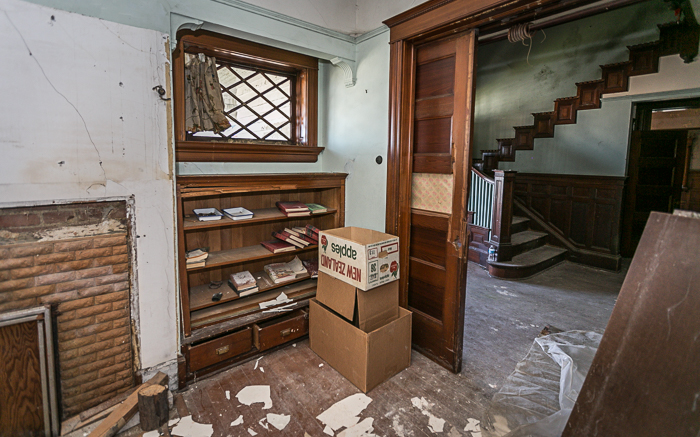
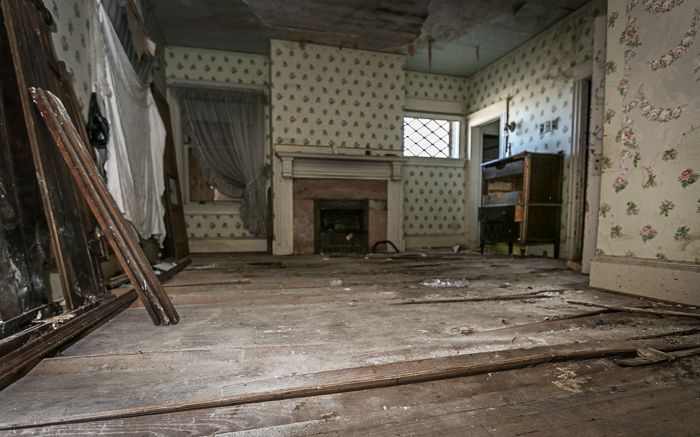
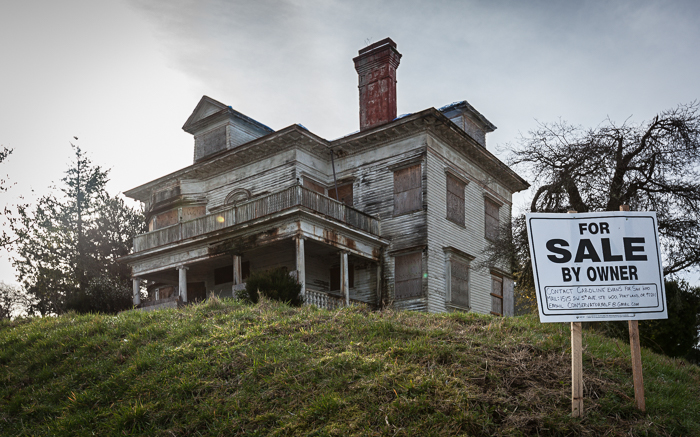
an edited version of this article originally appeared on Morbidology.
or see our other blog posts here.
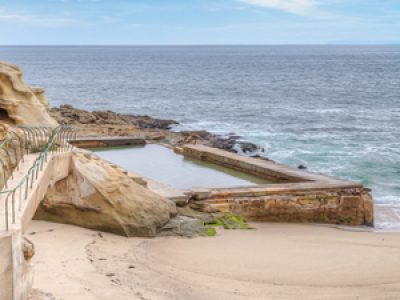
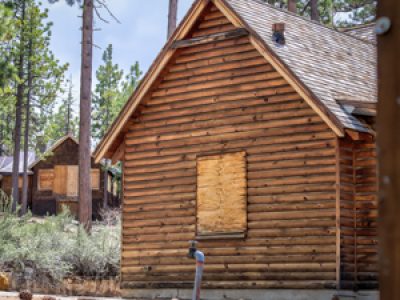
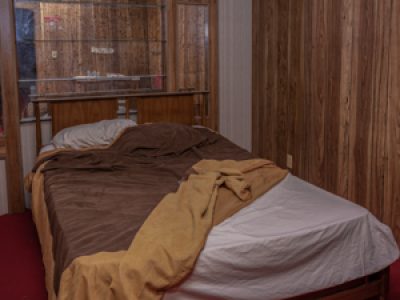
I found the story very interesting. Would never have known about this old house, had I not found this article. I have family living in Astoria, they have visited the museum and of course have seen the old house. I’m going to look for it next time I’m in Astoria.
Wonderful article, very well written and you obviously have a passion for the history and mystery of this iconic and storied family and Astoria
This house is amazing and perfect for an idea I have for a music video. I was interested in using this house as the location. Would this be a possibility and if so what process would I need to go through to make it happen? Thank you.
[…] Get More Information […]
The real mystery of this place….. my family built a house in this land. The Welch’s. They went out of town for six months to San Francisco when they came back their house have been knocked down and the Flavels had moved their house on top of it. I confirmed today that there is indeed a house underneath this house that was my families. They sued the Flbel‘s and they lost because the judge said possession was 9/10 of the law.This started as a Welch house.
This was an awesome read, thank you! I’m an amateur historian of sorts and have been intrigued by Astoria for a few years now. The massive boarding houses there are amazing. If they could just talk, right? Thanks for the history! Right now I’m in the process of trying to get photos and information on the hat used to be an old folks home, in Grand Ronde, Oregon. It’s amazing how hard it is to find any information. It is located at 8635 Grand Ronde rd. I visited there, as a child, in 1981, with a group of women and children from my church, to hang with the elderly. It was in a sad state, dark green paint peeling, rusted fire escape ladders and slide, over grown gardens and unkempt flower beds etc. A daunting place for a child. Fast forward to my early twenties, when it was taken over by a family- last name Malaguti. Mr. Malaguti had received a massive payout for agent orange exposure in Vietnam, and the family squandered it on buying up old properties like old schoolhouses etc (I went to one with them! They seemed to have intentions of restoring them, but never did. They were mostly hoarders, with a bingo addiction. All their children had infirmities and deformities of some type, from the agent orange epigenetics. They were an interesting lot, but the most interesting part, is when they allowed vagrant kids to live in the massive mansion,, that was more like a hospital. I was one of them. There was only power on the main floor, namely the great room and kitchen. No hot water though. I chose a room on the second floor, that seemed to be an intake room for check ups, as it had a counter. I made my “room” on the other side of the counter, so that it was in between myself and the door to the room. It was that creepy. Imagine being a young person, on uppers and downers, with a pallet for the strange, dark and mysterious, coming ‘home’ late at night, using an old fire escape, just to walk into pitch black halls, wind whistling and howling through the halls, shutters and doors banging in the night breeze.. having to walk past bathrooms with massive porcelain tubs all rusted out.. broken mirrors and rats scurrying… like a seen from Saw. Ugh that was a wild time.. Anyway, I’ve always wanted to go back and take a tour. It’s a residence now, but not well restored from the outside. Lots of stuff everywhere- outbuildings and junk everywhere. I wonder what it’s like now.. If anything I would just love to find old photos from when it was an old folks home, but I keep coming up empty. I’m going to have to pay for any records I can find- and I might just do that, since everyone says I should write a book about my life, this is one chapter I would need photos for, to truly encapsulate the experience! Thanks again, the more the world moves into such strange times, the more I want to crawl into history